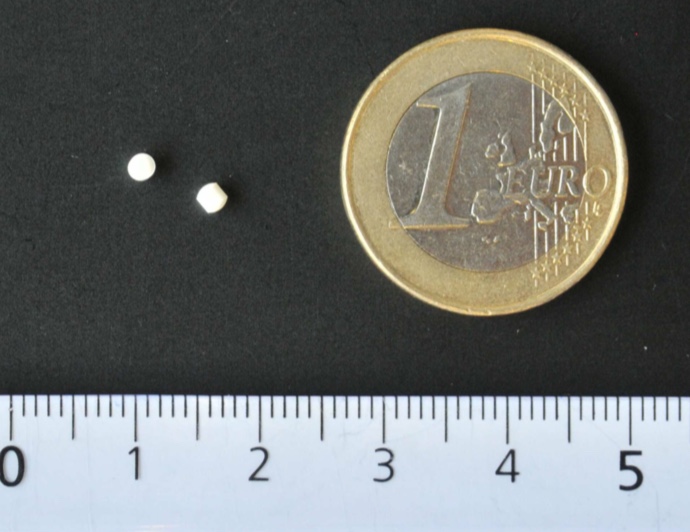Development of a Pediatric Mini-Tablet Formulation for Expedited Preclinical Studies

Multiple considerations are essential to address the main challenges of dose flexibility and patient adherence in pediatric drug development, particularly for oncology. Mini-tablets, 2 mm in diameter, were manufactured using a rotary tablet press at a set weight and compression force level. The physical characteristics were consistent for mini-tablets throughout multiple batches. Polymeric amorphous solid dispersion (ASD) was used as a solubility enhancing technique to increase solubility and exposure of lapatinib. The effects of the polymeric excipient and disintegrant on drug release properties were investigated. While having a lower apparent solubility and shorter storage stability, hydroxypropyl methylcellulose E3 (HPMCE3) formulation provided a higher percentage of drug release compared to hydroxypropyl methylcellulose phthalate (HPMCP). The intermolecular interaction within the ASD system plays a role in the level of apparent solubility, physical stability, and concentration of free drug available in an aqueous environment. Juvenile porcine models at two different weight groups (10 and 20 kg) were used to obtain the pharmacokinetic parameters of lapatinib. While the dose-normalized exposure of drug was found to be lower in the pig study, the dose flexibility of mini-tablets enabled a constant dose level to be administered to achieve equivalent plasma concentration-time profiles between the two groups. This linear scaling in the amount of drug in pediatric and adult population has also been observed in human clinical studies. Continue on Development of a Pediatric Mini-Tablet Formulation for Expedited Preclinical Studies
Keywords: Amorphous dispersion; Juvenile porcine model; Mini-tablets; Pediatric drug delivery; Pharmacokinetics
Lapatinib, HPMCE3 (METHOCEL™ E3 Premium LV), HPMCP, Microcrystalline cellulose (Avicel® PH 200), CCS (Ac-Di-Sol®), Magnesium stearate, Colloidal silicon dioxide, methylene chloride, methanol, acetonitrile
CONCLUSION
Mini-tablets, 2 mm in diameter, were prepared using the lapatinib ASD with two different polymeric excipients (i.e., HPMCP and HPMCE3). The physical properties of mini-tablets (weight, dimension, tensile strength, percent friability) were similar for all batches produced in this study. The manufacturing procedure used in this study is applicable for all formulation factor changes as demonstrated. The dissolution testing revealed that the amount of disintegrant added (i.e., CCS) affected the drug release profile between the 5- and 30-min time points. There was no significant difference in the cumulative amount of drug release after the 30-min time point. The mini-tablets provided flexibility in the animal study as the amount of drug given was adjusted based on body weight to maintain the same dose level for both rounds. The Tmax obtained from juvenile pigs overlapped with the values provided in a pediatric clinical trial, while Cmax and AUC are 10-fold lower than those observed in children. In contrast, we have observed that the amorphous lapatinib resulted in a 10-fold increase in bioavailability in contrast to the crystalline material in adult pigs (data not shown). Differences in the Cmax and the AUC between the porcine model and children may be due to several factors including the dose scaling methods, the physical properties of state, and the broader age range in the pediatric trial. Since the mini-tabs are a flexible dosing formulation, the number administered could be adjusted to match the Cmax and AUC desired in pediatric patients.

